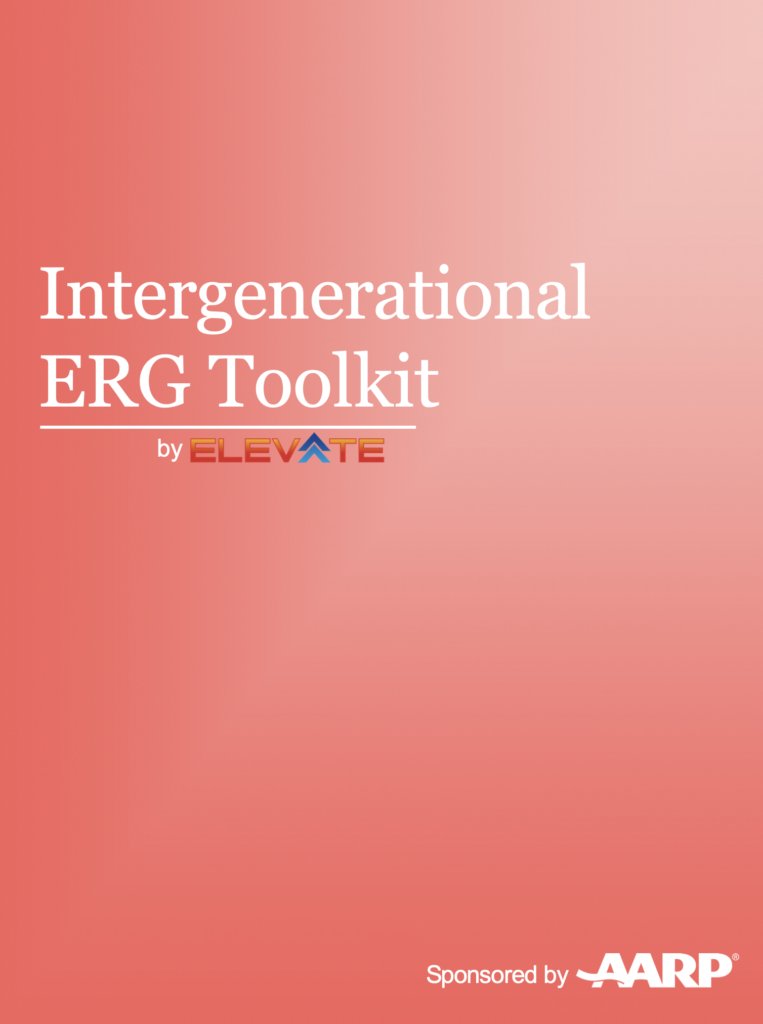What a Five-Generation Workforce Means for You: The Myths and Realities
Nick, a senior manager in a global tech company based in Seattle, has worked with people of many different ages, both older and younger than him. His experience is increasingly typical in a workforce that spans five generations, a growing diversity of experience that provides the benefit of workers sharing wisdom across the ages, but also gives rise to problems like ageism–the bias against others based merely on their calendar age. Nick recently learned that one of his direct reports is notably older than Nick assumed. “At that moment, I realized that I had been thinking of him as less serious and more in need of guidance. I knew I had to examine my prejudices about age.”This is the first time in history that such a rich mixture of people from their teens to their 80s are at work. But the implications for business are still being sorted out. In 2020, a Deloitte white paper reported that 70% of executives surveyed believed a multigenerational workforce was important for their organizations, but only 10% felt ready to lead one and understood how it might affect operations.The widespread assumption has been that the generations are distinct enough in their affinities that they should be treated differently. In the Deloitte survey, more than half the respondents said they consider differences between the generations in designing operations and benefits But are these differences more perceived than real? Deloitte’s report cites the new concept of a “perennial” employee, or someone who transcends generational stereotypes.As the Deloitte survey explains: “Why is generation becoming less relevant as a way to understand the workforce? The starting point is that careers have become more dynamic and complex, loosening the historic correlation between age and career progression. Rapid technological and organizational change means that workers must now reinvent themselves multiple times throughout their working lives; at the same time, the broader business culture has shifted to make it acceptable, sometimes even desirable, to promote younger individuals into leadership positions. The upshot is that 65-year-old interns can today be found working side by side with 25-year-old managers, calling into question the assumption that age is a reasonable proxy for understanding people’s workplace challenges and needs.”A 2012 analysis of more than 20 studies supports this view, finding few generational differences in work-related variables like attitudes towards work or technology. Where they do exist, the differences can likely be attributed to variables other than age, like education level.Yet ageism persists. In this story, the first in a three-part series, we'll be looking at how employers can confront this challenge by adopting more age-inclusive practices. There’s good reason to do so, since lack of trust between generations can create unnecessary competition and resentment, to the detriment of working relationships. One experiment found that negative beliefs about older people and how they adapt to new technology led to poorer training of those people. Another survey found that hiring managers view younger workers as having more relevant education and experience and being a better cultural fit with organizations. On the other side is a view that goes as far back as Socrates: young people are flighty, have a poor work ethic, or require constant praise from above. Stephane P. Francioli, Ph.D., a postdoctoral researcher at the Wharton School of Management, has made a study of “youngism” and found that when asked about age-related abuse or discrimination, younger workers report higher rates than bias related to sexual orientation, race, religion, or gender, he says. Could this be because they see the workplace as wholly unfair? No, he says. If that were true, younger workers would also complain about issues of racism, sexism, or anti-LGBTQIA+ actions at higher levels than other age groups. They don’t. Heather Tinsley-Fix is a Senior Advisor at AARP where she helps employers support a multigenerational workforce (company photo)Pigeon-holing different groups can impair how teams work together, says Heather Tinsley-Fix, a senior advisor at AARP, whether it’s saying that older people are not flexible with new tech or younger people have no loyalty. “If someone was young and not tech savvy, they wouldn’t mention it, but if they are older, it gets attributed to age,” she said. “It's often just a knee-jerk reaction.”Abuse and discrimination can take many forms. Younger workers may be asked to run personal errands outside of their job description, or handle on-call hours at night because they don’t have children to take care of. They may be denied flexible work arrangements that parents of young children are given because a manager doesn’t think young, childless employees will work as hard at home without supervision, says Francioli.The problems that affect younger workers are often not addressed because they are not recognized legally, at least at the federal level. In the U.S., the Age Discrimination in Employment Act covers age discrimination in workers over 40, but can disregard other workers. Employers need to be careful not to encourage and reemphasize generational differences by organizing training according to age groups, like courses on how to manage millennials, helping older workers navigate technology, or how your Gen Z staff is different. “There is no scientific basis for any of this, it creates an us vs. them atmosphere, and encourages an in-group/out-group mentality,” Francioli said.One other consideration is how people can project age-related perceptions onto others. An older worker, for example, may believe coworkers think he is slow to adapt to new work methodologies, when they may not feel that way at all. In fact, one study found that what people believed about other generations was usually positive. The outlier was what people thought of younger generations, though young people believed others’ perceptions of them were far more negative than the reality.While putting stereotypes aside, there are still some age-related realities that employers should take into account. For example, companies can consider ergonomic factors when it comes to older workers, as well as developing support programs for staff members going through menopause. But assuming attitudinal characteristics of specific age groups and training workers based on those assumptions is often counterproductive.At the same time, the world is changing fast, so generations are experiencing factors like media and economic conditions in different ways, which shouldn’t be overlooked, says Corey Seemiller, Ph.D., a professor at Ohio’s Wright State University, and author of several books about Gen Z. Understanding those differences can be key to engaging with team members and the future success of your organization. She points to Gen Z, the social media generation, and their comfort with video as a form of communication. “Do you offer the opportunity for them to provide a video resume? Not all of them will, but some might prefer it,” she said.Many in Gen Z are uninterested in public accolades for their work; some actively dislike it, Seemiller says. Similarly, those from Gen X, often called the Latch-Key Generation, experienced a lot of freedom during their childhood and are often averse to micromanagement.Knowing what might discourage different generations and meeting them where they are doesn’t make you ageist. But if, for example, you note that older people who worked in an analog culture for most of their careers are having trouble adapting to a new tech platform and subsequently require special training for all people over 50, Seemiller says, that is when it becomes discriminatory. The best way to support the different needs of employees is to talk to them and treat them as individuals, advises Seemiller. Employers should find out what they want, what they need, and where there is room for improvement. Regular surveys are a good way to do this. All of this can be highly nuanced, but for employers, it will be worth the effort. We are experiencing a great age shift in the workforce. The UN estimates more than a third of the population will be over 65 by 2050. In the U.S., one-fifth of the population will be over 65 by 2030. Better health, and better healthcare, as well as economic circumstances, have led to people working longer. At the same time, the birth rate is declining.Is your organization prepared for fewer younger workers and more older workers? How can you create a culture where ageism and prejudice against anyone, young or old, doesn’t gain a foothold? How can you harness the power of a multigenerational workforce? In part two of this series, we’ll provide actionable ideas and examples of programs that have helped other organizations successfully navigate changing demographics.Editor’s note: From Day One thanks our partner, AARP, for sponsoring this story, the first in a series on how employers can foster age inclusion in the workplace. Interested in assessing how you are doing with age inclusion–and learning more? Try AARP’s new tool, Age Inclusion 101. Just send an email to employerpledge@aarp.org, with the subject line betatest.Lisa Jaffe is a freelance writer who lives in Seattle with her son and a very needy rescue dog named Ellie Bee. She enjoys reading, long walks on the beach, and trying to get better at ceramics.






